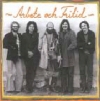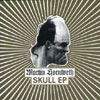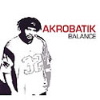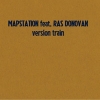 For a thirty-year-old record to still sound ahead of its time is quitea feat. Arbete & Fritid are one of few bands lucky enough to becalled legends. That they were Swedish is incidental, and to try andcategorize the music they made is a futile pursuit. Their liveperformances were not to be missed, as they could easily shift from onemusical language to another, crossing styles and genres jazz and rockbut always with a folk base. Listening to this, their third album,today is like opening a time capsule and hearing a Nordic folk bandthat could have recorded this music fifteen minutes ago. The reissuealso includes a rare bonus track, recorded for Swedish National Radio,that shows the band in their best light. The CD on a whole is like onebig wedding party: there's the bachelor party on "Gånglåt efter LejsmePer Larsson, Malung," a ribald gyration but all in all suave andsoaring presence of an album opener; the tryst of "Elâzig-dans," wherethe lovers dance for the world to see, and profess their undyingdevotions to each other; and then the album moves its way through thewedding march and on to the reception. There are a few exceptions tothis general mood, such as the dark brooding feel of "The EuropeanWay," and the pure feral angst of "Petrokemi Det Kan Man Inte BadaI"—my favorite due to the saxophones and throated chants. I hear thestrains of countless bands of today in this sound. For the most part,though, this is a classic, gorgeous record that presents a range ofemotions anyone can identify with, despite an inability to understandthe words, the titles, or read the liner notes.
For a thirty-year-old record to still sound ahead of its time is quitea feat. Arbete & Fritid are one of few bands lucky enough to becalled legends. That they were Swedish is incidental, and to try andcategorize the music they made is a futile pursuit. Their liveperformances were not to be missed, as they could easily shift from onemusical language to another, crossing styles and genres jazz and rockbut always with a folk base. Listening to this, their third album,today is like opening a time capsule and hearing a Nordic folk bandthat could have recorded this music fifteen minutes ago. The reissuealso includes a rare bonus track, recorded for Swedish National Radio,that shows the band in their best light. The CD on a whole is like onebig wedding party: there's the bachelor party on "Gånglåt efter LejsmePer Larsson, Malung," a ribald gyration but all in all suave andsoaring presence of an album opener; the tryst of "Elâzig-dans," wherethe lovers dance for the world to see, and profess their undyingdevotions to each other; and then the album moves its way through thewedding march and on to the reception. There are a few exceptions tothis general mood, such as the dark brooding feel of "The EuropeanWay," and the pure feral angst of "Petrokemi Det Kan Man Inte BadaI"—my favorite due to the saxophones and throated chants. I hear thestrains of countless bands of today in this sound. For the most part,though, this is a classic, gorgeous record that presents a range ofemotions anyone can identify with, despite an inability to understandthe words, the titles, or read the liner notes.samples:



 Former D Generation frontman Jesse Malin is an odd mix of Bob Dylan,Mark Knopfler, and Neil Young in the vocal department, and on his debutsolo album, he shows he's straying further and further from his punkrock roots to become a roots rock punk. With frequent cohort Ryan Adamsat the knobs and sliders and on electric guitar, Malin is free to letout his more troubadour tendencies, spinning yarns of lost love anddying dreams. For the most part, the formula works just as long as youcan get past Malin's aforementioned voice and some occasional triteimagery, mostly involving the repeated mention of cigarettes. On thecover, Malin projects the image and feel this album most embodies: asubway performer, strumming away on his acoustic guitar, begging peopleto throw him a couple quarters. He's that unlucky sap with an openguitar case and a Yamaha acoustic, track after track, waiting for hisluck to change rather than try and change it himself. Even though itrocks out here and there, like on "Wendy," and "High Lonesome," thereis an overwhelming emptiness and depression throughout the record.Malin is here, warts and all, including the most awful vocal momentsimaginable in places ("Solitaire" with its strained wails), anddecidedly low production values. He paints a picture of New York Cityfrom the dim side, where people are down on their luck, can't evenafford a beer, and just want someone to notice. It's not a new theme,not a new approach, and Malin's not a new voice; but it's still apretty good debut, with some varied flavors, and he occasionally hintsat a grandeur that might rival New Jersey's favorite son someday.
Former D Generation frontman Jesse Malin is an odd mix of Bob Dylan,Mark Knopfler, and Neil Young in the vocal department, and on his debutsolo album, he shows he's straying further and further from his punkrock roots to become a roots rock punk. With frequent cohort Ryan Adamsat the knobs and sliders and on electric guitar, Malin is free to letout his more troubadour tendencies, spinning yarns of lost love anddying dreams. For the most part, the formula works just as long as youcan get past Malin's aforementioned voice and some occasional triteimagery, mostly involving the repeated mention of cigarettes. On thecover, Malin projects the image and feel this album most embodies: asubway performer, strumming away on his acoustic guitar, begging peopleto throw him a couple quarters. He's that unlucky sap with an openguitar case and a Yamaha acoustic, track after track, waiting for hisluck to change rather than try and change it himself. Even though itrocks out here and there, like on "Wendy," and "High Lonesome," thereis an overwhelming emptiness and depression throughout the record.Malin is here, warts and all, including the most awful vocal momentsimaginable in places ("Solitaire" with its strained wails), anddecidedly low production values. He paints a picture of New York Cityfrom the dim side, where people are down on their luck, can't evenafford a beer, and just want someone to notice. It's not a new theme,not a new approach, and Malin's not a new voice; but it's still apretty good debut, with some varied flavors, and he occasionally hintsat a grandeur that might rival New Jersey's favorite son someday. Every single song on Whispermoonis moody, dark, soulful, and reminds me of an old, sparsely populatedbar in the middle of a desert somewhere around dusk. Live drums,upright bass, bluesy vocal samples, and a smattering of scratching andcoarse atmospheres bounce about the entire album weaving catchymelodies and smooth grooves. "Train Song" features a ringing acousticguitar, a beautiful female vocal part that summons the blues, and anirresistible beat fed by both live drums and thick digital bass drops."Decadence," on the other hand, is a beat-heavy and more vocallydexterous track, fed by the energy of a bass guitar and Manchild'sraps. Thematically, the topics of many of the songs are a bit grandioseand this is where Listener's weakness is exposed. "You're SoUnderground" attempts to critique the I'm-a-player attitude so popularin rap but ends up falling short in the rhyme-department. Listener'swriting isn't entirely bad, but it's certainly not as strong as itcould be. I find myself agreeing with a lot of what the guy has to say,but I often feel as if it could be said with more command. That's notto say that every rap Listener makes is dull. The aforementioned "TrainSong" is a gorgeous narrative the likes of which I've never heard inhip-hop. It's just that some of themes (such as drug use, love, media,and religion) are laid so bare as to be a bit cheesey; many of thelyrics simply come off as too calculated and his vocal style begins tosound repetitive as the album moves along. Musically this album iscolorful, inescapably catchy, and varied; there's not a dull moment tobe found. Perhaps with some reflection and a bit more disciplineListener will become a lyrical force to be reckoned with, as well.
Every single song on Whispermoonis moody, dark, soulful, and reminds me of an old, sparsely populatedbar in the middle of a desert somewhere around dusk. Live drums,upright bass, bluesy vocal samples, and a smattering of scratching andcoarse atmospheres bounce about the entire album weaving catchymelodies and smooth grooves. "Train Song" features a ringing acousticguitar, a beautiful female vocal part that summons the blues, and anirresistible beat fed by both live drums and thick digital bass drops."Decadence," on the other hand, is a beat-heavy and more vocallydexterous track, fed by the energy of a bass guitar and Manchild'sraps. Thematically, the topics of many of the songs are a bit grandioseand this is where Listener's weakness is exposed. "You're SoUnderground" attempts to critique the I'm-a-player attitude so popularin rap but ends up falling short in the rhyme-department. Listener'swriting isn't entirely bad, but it's certainly not as strong as itcould be. I find myself agreeing with a lot of what the guy has to say,but I often feel as if it could be said with more command. That's notto say that every rap Listener makes is dull. The aforementioned "TrainSong" is a gorgeous narrative the likes of which I've never heard inhip-hop. It's just that some of themes (such as drug use, love, media,and religion) are laid so bare as to be a bit cheesey; many of thelyrics simply come off as too calculated and his vocal style begins tosound repetitive as the album moves along. Musically this album iscolorful, inescapably catchy, and varied; there's not a dull moment tobe found. Perhaps with some reflection and a bit more disciplineListener will become a lyrical force to be reckoned with, as well. Best known for his work as bandleader and drummer for Norwegiancollective Jaga Jazzist, Martin Horntveth sets aside the sticks toconcentrate more on the role of sound manipulator, mixer and produceron his second solo release. While the prevalent, fast-paced industrialsounds on the six-track SkullEP have very little in common with the style of music that Jaga Jazzistperform, certain elements of rhythms and low end sounds may seemfamiliar. Grinding gears at the top of the disc, "100%" fuses distortedup-tempo beats and demolished keyboard bass sounds with high-pitcheddental drill chirps and whistling, detuned keyboard lines for a trackthat teeters on the edge of cacophony. The warm, floating tremolokeyboard and heavy, precise drum machine propelled "Comic" is litteredwith clipped spoken word samples and sound snippets, which can befollowed along with on the handy, phonetically sounded "lyric" sheetinside the disc's front cover. Horntveth adds his frenetic sampling ofbeats and synth squelches to fellow Norwegian metal outfitNOPLACETOHIDE's tight, chugging guitars for a sixty second rendition ofa track of theirs on "Sole (Remix)." The distorted shuffle of "SzakalIs Home For X-Mas" rounds out Skull's twenty minutes with anarrangement of squelches and bass end that bring in a pretty keyboardmelody which, by the tune's end, glimmers through to slightly conveythe festive mood indicated in the title. The farthest thing from a"drummer" record, Horntveth's electronic-based compositions andarrangements are solid enough to provide a viable outlet aside fromJaga Jazzist and make a name known by those that don't necessarily readliner notes.
Best known for his work as bandleader and drummer for Norwegiancollective Jaga Jazzist, Martin Horntveth sets aside the sticks toconcentrate more on the role of sound manipulator, mixer and produceron his second solo release. While the prevalent, fast-paced industrialsounds on the six-track SkullEP have very little in common with the style of music that Jaga Jazzistperform, certain elements of rhythms and low end sounds may seemfamiliar. Grinding gears at the top of the disc, "100%" fuses distortedup-tempo beats and demolished keyboard bass sounds with high-pitcheddental drill chirps and whistling, detuned keyboard lines for a trackthat teeters on the edge of cacophony. The warm, floating tremolokeyboard and heavy, precise drum machine propelled "Comic" is litteredwith clipped spoken word samples and sound snippets, which can befollowed along with on the handy, phonetically sounded "lyric" sheetinside the disc's front cover. Horntveth adds his frenetic sampling ofbeats and synth squelches to fellow Norwegian metal outfitNOPLACETOHIDE's tight, chugging guitars for a sixty second rendition ofa track of theirs on "Sole (Remix)." The distorted shuffle of "SzakalIs Home For X-Mas" rounds out Skull's twenty minutes with anarrangement of squelches and bass end that bring in a pretty keyboardmelody which, by the tune's end, glimmers through to slightly conveythe festive mood indicated in the title. The farthest thing from a"drummer" record, Horntveth's electronic-based compositions andarrangements are solid enough to provide a viable outlet aside fromJaga Jazzist and make a name known by those that don't necessarily readliner notes. Vastness of an ocean or shallowness of a bathtub? The Islewas quietly put on a musical map by Japanese cartographers P-Vine backin April, joining the ranks of sea-themed concept albums such as PianoMagic's A Trick of the Sea and Rachel's The Sea and the Bells(diaries of aquatic adventures, scrupulous accounts of seasickness,logbooks of navel/naval gazing). Unlike its conceptual predecessors,the creators of The Isle do not go after the epic and theexpansive but aim for the childish and the minimal: a fairy tale. It'sa split album cleverly disguised as a collaboration. Tokyo's SohichiroSuzuki (World Standard) and Cologne's Jörg Follert (Wechsel Garland,Wunder, 1/3 of Visor) each contributed seven compositions and'co-wrote' only the title track, swapping ideas via mail. On firstencounter, Suzuki's and Follert's previous efforts seem more satisfyingthan this. Through their infantile melodies and simplisticarrangements, the musicians channel not the vastness and deepness ofthe sea but the rather comfortable confines of a washbasin. A faintasthmatic wheeze of a rubber ducky at the end of the first trackreinforces this impression. Subsequent listens, however, reveal a muchricher palette of mood, harmony and texture, full of subtleties thatwere not apparent initially. Acoustic guitars, xylophones, toy pianos,melodicas and violins (most of the string parts masterfully played byan uncredited Susanna Welsch) are weaving a patchwork of pointillistwaltzes, plinky bossa-novas, mournful ambient vignettes, and even oneharpsichord-driven ballad beautifully sung (in German) by Follert, "TheHarbour," which, incidentally, is the only vocal piece on the album.The result is not a heavy-lidded Odyssey but rather a Treasure Islandas enacted by talented carefree kids, wearing oversized Hessian bootsand paper cocked hats, with prop parrots perched on their narrowshoulders and plastic spyglasses pressed firmly to their wide-openeyes. This is Visine-washed music, clear and bright. The latitude andlongitude of The Isle may be different from the ambientbanjoisms of World Standard's Country Gazette or cinematic dubisms ofWechsel Garland's Liberation von History but it confidently stands onits own in the murky sea of this year's music. The last harbor for theLost Children.
Vastness of an ocean or shallowness of a bathtub? The Islewas quietly put on a musical map by Japanese cartographers P-Vine backin April, joining the ranks of sea-themed concept albums such as PianoMagic's A Trick of the Sea and Rachel's The Sea and the Bells(diaries of aquatic adventures, scrupulous accounts of seasickness,logbooks of navel/naval gazing). Unlike its conceptual predecessors,the creators of The Isle do not go after the epic and theexpansive but aim for the childish and the minimal: a fairy tale. It'sa split album cleverly disguised as a collaboration. Tokyo's SohichiroSuzuki (World Standard) and Cologne's Jörg Follert (Wechsel Garland,Wunder, 1/3 of Visor) each contributed seven compositions and'co-wrote' only the title track, swapping ideas via mail. On firstencounter, Suzuki's and Follert's previous efforts seem more satisfyingthan this. Through their infantile melodies and simplisticarrangements, the musicians channel not the vastness and deepness ofthe sea but the rather comfortable confines of a washbasin. A faintasthmatic wheeze of a rubber ducky at the end of the first trackreinforces this impression. Subsequent listens, however, reveal a muchricher palette of mood, harmony and texture, full of subtleties thatwere not apparent initially. Acoustic guitars, xylophones, toy pianos,melodicas and violins (most of the string parts masterfully played byan uncredited Susanna Welsch) are weaving a patchwork of pointillistwaltzes, plinky bossa-novas, mournful ambient vignettes, and even oneharpsichord-driven ballad beautifully sung (in German) by Follert, "TheHarbour," which, incidentally, is the only vocal piece on the album.The result is not a heavy-lidded Odyssey but rather a Treasure Islandas enacted by talented carefree kids, wearing oversized Hessian bootsand paper cocked hats, with prop parrots perched on their narrowshoulders and plastic spyglasses pressed firmly to their wide-openeyes. This is Visine-washed music, clear and bright. The latitude andlongitude of The Isle may be different from the ambientbanjoisms of World Standard's Country Gazette or cinematic dubisms ofWechsel Garland's Liberation von History but it confidently stands onits own in the murky sea of this year's music. The last harbor for theLost Children. Originally released in September 2002, Magic Radios is the documented collaboration between experimental jazz musician Morgan Caney and electronic-based composer Kamal Joory, showcasing an interesting blend of both their backgrounds for nine compositions and a remix.
Originally released in September 2002, Magic Radios is the documented collaboration between experimental jazz musician Morgan Caney and electronic-based composer Kamal Joory, showcasing an interesting blend of both their backgrounds for nine compositions and a remix. Just after Saul Williams' Amethyst Rock Starwas released, I got into some great arguments with longtime hip-hopfans who found his high-minded, pandering-be-damned (literally)approach to hip-hop a tad bit pretentious. Similar complaints can't bemade about Akrobatik, who comes across instead like the cool-but-savvyuncle that every kid should be able to turn to for advice. Ak is allfor doling out the science, but like he says on the title track, "Youcan study for years and be the world's top scholar, but trying to makethe fans feel dumb won't make 'em holler." Most of the album is aboutkeeping it together in one way or another, finding common groundbetween the nerds and the thugs, building communities that sustainthemselves, and generally being excellent to one another: Keanu Reeveswould be proud, and the front-porch family feel of most of the albummakes for friendly, comfortable listening. The inclusion of "Woman, Pt.II" (an honest take on the conflicting impulses behind dating) justlends, well, balance to the proceedings. As you might expect by now, Balancefeels more like the effort of an accomplished craftsman than theproduct of some firebrand artist: the bombast and atmosphere of, say, aDef Jux or Hieroglyphics record is nowhere in sight, and I'm not alwaysin the mood for the Sunday-afternoon coziness of some of this stuff.(Think Blackalicious without the craziest of the verbal gymnastics andyou've just about got it.) Oh, and it does feature one bog-standardObnoxious DJ Intro (courtesy of Evil Dee, on the album-low track"Always Bet On Ak")... I guess that's a negative point, too. Asantidotes to hip-pop go, though, this one is well worth hearing. Thatmight not be the strongest recommendation possible, but maybeunassuming support is what's called for with an album and an artistlike this.
Just after Saul Williams' Amethyst Rock Starwas released, I got into some great arguments with longtime hip-hopfans who found his high-minded, pandering-be-damned (literally)approach to hip-hop a tad bit pretentious. Similar complaints can't bemade about Akrobatik, who comes across instead like the cool-but-savvyuncle that every kid should be able to turn to for advice. Ak is allfor doling out the science, but like he says on the title track, "Youcan study for years and be the world's top scholar, but trying to makethe fans feel dumb won't make 'em holler." Most of the album is aboutkeeping it together in one way or another, finding common groundbetween the nerds and the thugs, building communities that sustainthemselves, and generally being excellent to one another: Keanu Reeveswould be proud, and the front-porch family feel of most of the albummakes for friendly, comfortable listening. The inclusion of "Woman, Pt.II" (an honest take on the conflicting impulses behind dating) justlends, well, balance to the proceedings. As you might expect by now, Balancefeels more like the effort of an accomplished craftsman than theproduct of some firebrand artist: the bombast and atmosphere of, say, aDef Jux or Hieroglyphics record is nowhere in sight, and I'm not alwaysin the mood for the Sunday-afternoon coziness of some of this stuff.(Think Blackalicious without the craziest of the verbal gymnastics andyou've just about got it.) Oh, and it does feature one bog-standardObnoxious DJ Intro (courtesy of Evil Dee, on the album-low track"Always Bet On Ak")... I guess that's a negative point, too. Asantidotes to hip-pop go, though, this one is well worth hearing. Thatmight not be the strongest recommendation possible, but maybeunassuming support is what's called for with an album and an artistlike this. Last year around this time, I reviewed Saloon's debut album, This Is What We Call Progress.In it, I expressed the hope that with time, the Reading, UK quintetwould more fully develop and enrich their fledgling sound. If We Meet In the Future,their new album, unfortunately does not show evidence of the outcomefor which I'd hoped. Still taking strong cues from Stereolab andBroadcast, Saloon sadly never seems to quite live up to their fullpotential. This is not to say that any of their songs are unlistenable,but simply that their humble approach to recording is just *too*humble. If We Meet In the Future has a few lovely tracks: "QueQuieres?" is soothingly melancholic and "Dreams Mean Nothing" featuresa hypnotic film-noir croon. The originality of these two tracks standin marked contrast to more meandering, uninteresting songs like"Absence" and "The Good Life." Lead singer Amanda Gomez' voice is sweetand easy on the ears, but often lacks backbone. That said, and despitemy complaints with this album, I still feel that Saloon has the talentto come into their own and mature into something more substantial, butthe question remains whether or not they can actually pull it off.
Last year around this time, I reviewed Saloon's debut album, This Is What We Call Progress.In it, I expressed the hope that with time, the Reading, UK quintetwould more fully develop and enrich their fledgling sound. If We Meet In the Future,their new album, unfortunately does not show evidence of the outcomefor which I'd hoped. Still taking strong cues from Stereolab andBroadcast, Saloon sadly never seems to quite live up to their fullpotential. This is not to say that any of their songs are unlistenable,but simply that their humble approach to recording is just *too*humble. If We Meet In the Future has a few lovely tracks: "QueQuieres?" is soothingly melancholic and "Dreams Mean Nothing" featuresa hypnotic film-noir croon. The originality of these two tracks standin marked contrast to more meandering, uninteresting songs like"Absence" and "The Good Life." Lead singer Amanda Gomez' voice is sweetand easy on the ears, but often lacks backbone. That said, and despitemy complaints with this album, I still feel that Saloon has the talentto come into their own and mature into something more substantial, butthe question remains whether or not they can actually pull it off. Stefan Schneider's latest release as Mapstation features reworkings andversions of tracks from his full-length, as well as some new tracks.The focus is on Schneider's work with reggae singer Ras Donovan on"Gravity" and "Wake Up," which appeared on A Way to Find the Dayand gets two versions here. While the pairing is an interesting onethat is sure to spark more interest and conversation, it is still anawkward one as this release shows. The two men have certainly grownmore comfortable working together, and their music is full of melodywith a lazy shifting style. Relaxation is a given, with a gentle bounceand sway that begs the body to rise and fall with the proceedings.Unfortunately, the collaboration still doesn't connect fully, withSchneider's music providing a backdrop that is often, though notalways, jarred by the voice and inflections of Donovan. "Gravity" isfull of lyrics of polarity, opposites, and the expected call-outs ofreggae and dub, but Donovan's staccato is still too harsh for itssurroundings. "Wake Up" gets reinterpreted with Scallo, a DJ-vocalistwith ties to Donovan, but Scallo's jarring delivery creates cracks inan otherwise smooth exterior. "Wake Up version," in fact, is arevelation just because it features no vocals, and the true essence ofthe track is allowed to be on display. Not to be too cutting, though,on "Be True" the pair get it just right: Donovan wails and professes,with as little rapping or chatting as possible. Suddenly atransformation occurs, and even though the lyrics are a bit simplistic,juvenile, even, the rhythm and vocals are sexy enough to make you losecontrol, and forget whatever you were just thinking about. Schneider'sother work, including Radian's Martin Brandlmayr this time, is asconcise and yet full of life as always, particularly "Effects of MyHaste." For once, I felt the true meaning of the Donovan connection,though, and based on the promise of "Be True," there's greatness on thehorizon from these two.
Stefan Schneider's latest release as Mapstation features reworkings andversions of tracks from his full-length, as well as some new tracks.The focus is on Schneider's work with reggae singer Ras Donovan on"Gravity" and "Wake Up," which appeared on A Way to Find the Dayand gets two versions here. While the pairing is an interesting onethat is sure to spark more interest and conversation, it is still anawkward one as this release shows. The two men have certainly grownmore comfortable working together, and their music is full of melodywith a lazy shifting style. Relaxation is a given, with a gentle bounceand sway that begs the body to rise and fall with the proceedings.Unfortunately, the collaboration still doesn't connect fully, withSchneider's music providing a backdrop that is often, though notalways, jarred by the voice and inflections of Donovan. "Gravity" isfull of lyrics of polarity, opposites, and the expected call-outs ofreggae and dub, but Donovan's staccato is still too harsh for itssurroundings. "Wake Up" gets reinterpreted with Scallo, a DJ-vocalistwith ties to Donovan, but Scallo's jarring delivery creates cracks inan otherwise smooth exterior. "Wake Up version," in fact, is arevelation just because it features no vocals, and the true essence ofthe track is allowed to be on display. Not to be too cutting, though,on "Be True" the pair get it just right: Donovan wails and professes,with as little rapping or chatting as possible. Suddenly atransformation occurs, and even though the lyrics are a bit simplistic,juvenile, even, the rhythm and vocals are sexy enough to make you losecontrol, and forget whatever you were just thinking about. Schneider'sother work, including Radian's Martin Brandlmayr this time, is asconcise and yet full of life as always, particularly "Effects of MyHaste." For once, I felt the true meaning of the Donovan connection,though, and based on the promise of "Be True," there's greatness on thehorizon from these two. There's a chilled-out and generally cool feeling to every song on this disc. Every song is a pure, vibrating, and relaxing mix of dub beats and hypnotic melodies culled from a myriad of cultural influences.
There's a chilled-out and generally cool feeling to every song on this disc. Every song is a pure, vibrating, and relaxing mix of dub beats and hypnotic melodies culled from a myriad of cultural influences.
